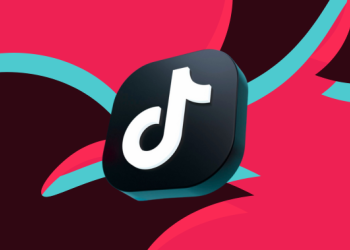Does 'The Instagram Algorithm' Still Exist in 2024?
Instagram, one of the most popular social media platforms, how does it exactly work? There are countless theories about how to get the most likes, comments, or views. Posting at the same time every day, responding to every comment, reposting the post in your story – marketers do everything to crack the algorithm or outsmart it to score better with their posts. But what if 'The Algorithm' doesn't exist at all? In this blog, we take you through how Instagram works and provide useful tips so you know exactly what to do to score.

Is there such a thing as 'the Instagram algorithm'?
Let's start at the beginning. What is an algorithm? Simply put, an algorithm is a set of instructions that a computer or other device can follow to perform a specific task. You can almost think of it as an Ikea manual, telling you step by step how to assemble a wardrobe.
One of the misconceptions about Instagram is that there is something like 'The Instagram Algorithm.' The complexity of Instagram lies precisely in the fact that there isn't one algorithm that determines what someone sees or doesn't see. Instagram uses various algorithms and processes, each serving a specific purpose. Instagram states:
"We want to make the most of your time, and we believe that using technology to personalize your experience is the best way to do this."
Based on the interests of the user
Instagram has grown significantly over the years. As more people joined the platform, more content was shared. This made it nearly impossible for most users to see everything. Instagram conducted research and found that in 2016, users missed 70% of all posts in their feed. For this reason, a feed was developed that ranks posts based on what the user is most interested in.
Therefore, Instagram uses a custom-made algorithm tailored to the user. To meet these needs, Instagram ranks content differently for each section of the app: Feed and Stories, Explore, and Reels.
Instagram's ranking system
Instagram uses so-called 'signals.' These include all the information they have about accounts and your preferences. These signals largely determine what a user sees on their timeline. The order in which a user sees content is determined by the most important signals for each section. Below is an overview of the signals in order of importance for each section.
Feed and stories
- Information about the post
- Information about the account that posted
- User activity
- User's history of interaction with the account that posted
Explore
- Information about the post
- User's history of interaction with the account that posted
- Activity of the user
- Information about the account that's posting
Reels
- Activity of the user
- The history of the user interacting with the accounts that's posting
- Information about the Reel
- Information about the account that's posting
What do these signals mean?
As you can see, the signals recur, often in a different order of importance. To be able to respond to this, you need to know what they mean:
1. Information about the post/ reel
These are signals that indicate the popularity of the post. This includes the number of likes and more general information, such as the content itself, when it was posted, whether it's a video or image, and whether a location is added.
2. Information about the account that's posting
This helps Instagram get an idea of how interesting this account is to you. It includes signals such as how often you've interacted with this account.
3. Activity of the user
This helps Instagram understand what the user might be interested in. It includes signals such as how many and which posts they liked.
4. User's history of interaction with an account
This helps Instagram get an idea of how generally interested a user is in seeing posts from a particular account. A signal here is the interaction between them.
So, how do you stand out on Instagram as an organization?
A question that probably crosses your mind as you read this blog. Rest assured, we have some tips ready for you that will help increase your reach.
1. Develop a solid social media strategy
Instagram uses various metrics to determine if a user finds something 'interesting.' One positive standout moment is not enough. Ensure that with relevant and engaging content, you consistently score high on likes, shares, and comments to regularly appear high in users' feeds. A good social media strategy is indispensable in this regard.
2. Dominate the feed!
Consistently post for a good position in your followers' feeds. To build a relationship with your followers, there must be enough content for them to interact with. Responding to comments also signals to the algorithm that you are close to your followers and building a connection.
3. Get to know your followers
Investigate the type of followers you have. If they are hardcore Instagram users, feel free to publish posts more frequently, and not every post needs to be a huge hit. If they open the app less frequently, it's better to limit your posts to the top-quality photos and videos. Here's how you can determine how often to post on social media.
4. Estimate your reach
Wondering what a 'good enough' reach percentage (reach/number of followers) is? Look at how many accounts your followers themselves follow. The fewer people they follow, the greater the chance that they will see your organization's Instagram posts.
Instagram algorithm is constantly changing.
When we talk about algorithms, you might envision people behind complicated dashboards turning knobs to determine which posts end up higher in a feed. It's time to move away from that notion. The algorithm is based on artificial intelligence, is highly self-learning, and, above all, constantly subject to change.
If A works best today, it could be B tomorrow. So, providing super-practical tips may not be very useful. It's better to focus on the six principles on which the algorithm is based. These are less variable and provide insight into underlying processes.
Whether you like it or not, winning attention on Instagram remains a battle. If you want to win that battle, it's wise to take the lessons above with you. In the long run, this will yield more results than forced tricks to manipulate the algorithm.



